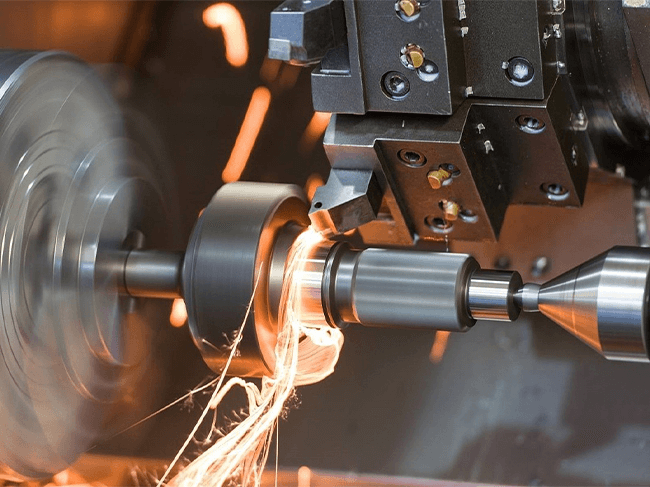In recent years, the manufacturing industry has seen remarkable advancements in machinery. These innovations are transforming how engineers and manufacturers approach production processes, offering unprecedented efficiency, precision, and sustainability. This blog post explores the latest innovations in manufacturing machinery, providing valuable insights and practical tips for industry professionals.
The Dawn of Smart Manufacturing
Manufacturing is undergoing a digital transformation, with smart manufacturing leading the charge. Smart manufacturing integrates advanced technologies like IoT, AI, and machine learning to create highly efficient and automated production systems.
How IoT is Changing Manufacturing
The Internet of Things (IoT) connects machines and devices, enabling real-time data collection and analysis. This connectivity allows manufacturers to monitor equipment performance and predict maintenance needs, reducing downtime and improving overall efficiency.
AI and Machine Learning in Manufacturing
Artificial Intelligence (AI) and machine learning are revolutionizing manufacturing by enabling predictive maintenance, quality control, and process optimization. These technologies help manufacturers identify patterns and trends, allowing for data-driven decision-making.
Benefits of Smart Manufacturing
Smart manufacturing offers numerous benefits, including increased productivity, reduced operational costs, and improved product quality. By leveraging advanced technologies, manufacturers can stay competitive in an evolving market.
3D Printing and Additive Manufacturing
3D printing, also known as additive manufacturing, is transforming how products are designed and produced. This technology allows for the creation of complex and customized parts with unprecedented precision.
The Rise of 3D Printing
3D printing has come a long way since its inception. Today, it is used in various industries, from aerospace to healthcare, to produce everything from prototypes to end-use parts.
Advantages of Additive Manufacturing
Additive manufacturing offers several advantages, including reduced material waste, faster production times, and the ability to create intricate designs that would be impossible with traditional manufacturing methods.
Applications of 3D Printing
3D printing is used in numerous applications, such as producing lightweight components for aerospace, custom medical implants, and even fashion accessories. Its versatility makes it a valuable tool for manufacturers.
Hydraulic Components Machining
Hydraulic components play a crucial role in a wide range of industrial applications, from heavy machinery to automotive systems. Machining these components involves precise manufacturing techniques to ensure optimal performance and durability.
Precision in Hydraulic Components
The machining of hydraulic components requires a high degree of precision. Components like valves, pistons, and cylinders must meet exact specifications to function correctly within hydraulic systems. Advanced machining techniques, such as CNC (computer numerical control) machining, are essential for achieving the required tolerances and surface finishes.
Innovations in Hydraulic Component Machining
Recent innovations in machining technologies are further enhancing the production of hydraulic components. Techniques such as multi-axis machining and high-speed machining allow for more intricate designs and faster turnaround times. Additionally, the integration of IoT and machine learning into machining processes enables real-time monitoring and optimization, further improving efficiency and quality.
Applications of Hydraulic Components
Hydraulic components are vital in various industries, including construction, aerospace, and automotive. In construction equipment, hydraulic systems power excavators, loaders, and cranes, ensuring robust and reliable operation. In the aerospace sector, hydraulic systems are essential for flight control and landing gear operations. The automotive industry uses hydraulic systems in braking and steering systems, contributing to vehicle safety and performance.
By adopting the latest machining innovations, manufacturers can produce high-quality hydraulic components that meet the stringent demands of modern industrial applications.
Advanced Robotics in Manufacturing
Robotics technology is advancing rapidly, with robots playing an increasingly important role in manufacturing. These machines perform tasks with high precision and speed, improving production efficiency and safety.
Collaborative Robots (Cobots)
Collaborative robots, or cobots, are designed to work alongside human operators. They are equipped with sensors and safety features that allow them to perform tasks in close proximity to humans without posing a risk.
Benefits of Robotics in Manufacturing
Robots offer several benefits, including increased productivity, reduced labor costs, and improved product quality. They can perform repetitive and dangerous tasks, freeing up human workers for more complex and creative work.
Future Trends in Robotics
The future of robotics in manufacturing looks promising, with advancements in AI and machine learning enabling robots to become even more intelligent and autonomous. These developments will further enhance their capabilities and applications.
CNC Machining and Automation
Computer Numerical Control (CNC) machining is a manufacturing process that uses computer-controlled machines to produce precise and complex parts. Automation is taking CNC machining to new heights, improving efficiency and accuracy.
The Evolution of CNC Machining
CNC machining has evolved significantly over the years, with modern machines offering greater precision and speed. The integration of automation has further enhanced its capabilities, allowing for continuous and unattended operation.
Benefits of CNC Automation
Automation in CNC machining offers several benefits, including reduced labor costs, increased production speed, and improved product quality. It also minimizes human error, resulting in more accurate and consistent parts.
Applications of CNC Machining
CNC machining is used in various industries, including automotive, aerospace, and electronics. It is ideal for producing parts with tight tolerances and complex geometries, making it a versatile and valuable manufacturing process.
Sustainable Manufacturing Practices
Sustainability is becoming increasingly important in manufacturing, with companies adopting eco-friendly practices to reduce their environmental impact. Innovative machinery and technologies are helping manufacturers achieve their sustainability goals.
Green Manufacturing Technologies
Green manufacturing technologies, such as energy-efficient machines and renewable energy sources, are helping manufacturers reduce their carbon footprint. These technologies contribute to a more sustainable and environmentally friendly production process.
Benefits of Sustainable Manufacturing
Sustainable manufacturing offers numerous benefits, including reduced energy consumption, lower operational costs, and improved brand reputation. By adopting eco-friendly practices, manufacturers can attract environmentally conscious customers and stakeholders.
Examples of Sustainable Practices
Examples of sustainable practices in manufacturing include using recycled materials, optimizing energy use, and implementing waste reduction strategies. These practices help companies minimize their environmental impact while maintaining efficiency and profitability.
Advanced Materials in Manufacturing
The development of advanced materials is driving innovation in manufacturing. These materials offer unique properties that enhance product performance and enable new manufacturing techniques.
The Role of Advanced Materials
Advanced materials, such as composites, nanomaterials, and high-performance alloys, are used in various applications, from aerospace to electronics. Their unique properties make them ideal for producing lightweight, durable, and high-performance components.
Benefits of Using Advanced Materials
Using advanced materials offers several benefits, including improved product performance, reduced weight, and increased durability. These materials also enable the development of new and innovative manufacturing processes.
Applications of Advanced Materials
Advanced materials are used in numerous applications, such as producing lightweight aircraft components, high-strength automotive parts, and advanced electronic devices. Their versatility and performance make them valuable assets for manufacturers.
Digital Twin Technology
Digital twin technology is revolutionizing manufacturing by creating virtual replicas of physical assets. These digital twins enable manufacturers to simulate, analyze, and optimize production processes in real-time.
What is Digital Twin Technology?
A digital twin is a virtual model of a physical object, process, or system. It is created using data from sensors and other sources, allowing manufacturers to monitor and analyze performance in real-time.
Benefits of Digital Twins
Digital twins offer several benefits, including improved operational efficiency, reduced downtime, and enhanced decision-making. They enable manufacturers to identify and address issues before they impact production, resulting in more efficient and reliable processes.
Applications of Digital Twin Technology
Digital twins are used in various applications, such as optimizing production lines, monitoring equipment performance, and improving supply chain management. Their ability to provide real-time insights makes them valuable tools for manufacturers.
The latest innovations in manufacturing machinery are transforming the industry, offering unprecedented efficiency, precision, and sustainability. By adopting these cutting-edge technologies, manufacturers can stay competitive in an evolving market and achieve their business goals.
For those looking to explore more about these innovations and how they can benefit your business, consider reaching out to our team of experts. We are here to help you navigate the complexities of modern manufacturing and achieve success in your operations.










